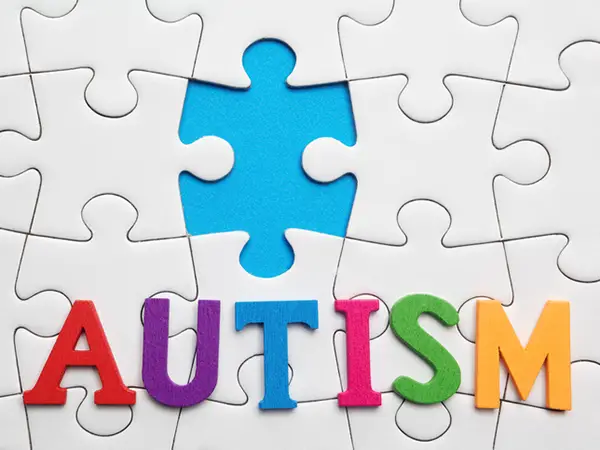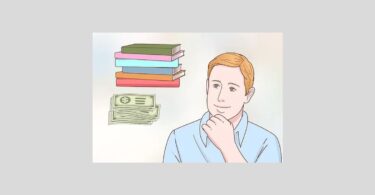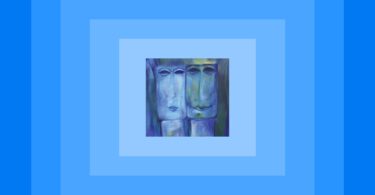Introduction
In the past autism was thought to be a psychiatric disease. It was also confused with childhood schizophrenia, childhood psychological disorders and childhood personality disorders. Research has resolved much of the past confusion.
About Autism
Autism is a disorder characterized by varying degrees of impairment in social interaction, communication and behavior of a child. This severe developmental disorder begins at birth or within the first two-and-a-half years of life.
Most autistic children are perfectly normal in appearance. In very young children it is difficult to diagnose this developmental disorder and parents are the first ones to notice a problem. Non-responsive behavior, with withdrawal from social interactions and losing the little amount of speech that he had gained initially, may lead the parents to get their toddler screened for this disorder.
Autism is nowadays called autism spectrum disorder, as there is a huge variation of symptoms that the child might suffer from. This disorder could range from mild to severe. The mild form is called Asperger syndrome. It could be classified as the Pervasive Development Disorder (PDD) when affecting children and Autistic Spectrum Disorders (ASD) when affecting adults. Its occurrence is worldwide.
For many years autism was rare, occurring in just five children per 10,000. Since the early 1990’s, the rate of autism has increased exponentially around the world with figures as high as 60 per 10,000. Boys outnumber girls four to one. In 2007, the Centers for Disease Control reported that 1 in 150 children were diagnosed with autism. In recent times there has been an increase in the incidence of autism both in the U.S. as well as in India.
The American Academy of Pediatrics (AAP) published an updated guide for the “Management of Children with Autism Spectrum Disorders.” In this publication, both background information and management choices are reviewed. In addition, the AAP’s approved “Surveillance and Screening Algorithm: Autism Spectrum Disorders (ASDs)” was introduced. Currently this translates into the following: All children should be screened for autism at 18 months, again at 2 years of age and at any time a parent raises a concern about autism spectrum disorders (even if there are no signs of developmental delay).
What is the outlook? Age at intervention has a direct impact on outcome. Typically, the earlier a child is treated, the better the prognosis. In recent years there has been a marked increase in the percentage of affected children who can attend school in a typical classroom and live semi-independently in community settings. However, the majority of autistic persons remain impaired in their ability to communicate and socialize.
Causes of autism
In spite of much research, the specific cause of autism is not clear. As we know today, no disease occurs due to one single cause. Whether it is diabetes, hypertension, thyroid dysfunction, etc., all the diseases are multifactorial in origin. Hahnemann indicated the triad of exciting cause, fundamental cause and maintaining cause (aphorism 5, 5th & 6th edition).
Focus of research
The genetic cause (Hahnemannian fundamental cause – miasmatic disorders).
An inherited disorder. The fragile X syndrome. Cerebral dysgenesis (abnormal development of the brain), Rett syndrome. Inborn errors of metabolism (biochemical defects).
Symptoms of autism
The current Diagnostic and Statistical Manual of Mental Disorders – Fourth Edition, Treatment Revision (DSM-IV-TR) identifies three features that are associated with autism:
Impairment in social interaction – Firstly there are the social skills impairment such as poor eye contact and poor interaction with peers.
Communication – Secondly there are the speech, language and communication issues that are a major concern for parents.
Behavior – Thirdly there are the behavioral issues such as hyperactivity, temper tantrums, poor attention span, decreased concentration and poor focusing.
Learning is not possible when the child is hyperactive or is not able to focus or concentrate. Also, the behavioral and communication problems may stem from an internal rather than an external cause that needs to be rectified.
Deficits that can be seen in Autistic Spectrum Disorder
In toddlers and preschoolers :
Things your baby should be doing:
Smiling back at you when you laugh or smile. Making babbling sounds. Being interested in looking at your face. Gaining weight appropriately. Being able to roll over. No apparent weakness on either side. Head is straight – not always tilted to one side. Eyes should now be straight. Having regular bowel movements.
By the age of 6 months he sits with assistance for a short time. Beginning to show interest in food. Rolling over.
Crawling starts by the age of 9months. He is able to sit unassisted. Sleeping through most nights on a regular basis. Looking at your eyes when you speak to him. Able to understand most of what is said to him.
By 9 to 12 months the baby develops gaze-monitoring and social-referencing skills. This is the ability to focus on things. This is his ability to read the face of a stranger, whether the man in front of him would do any harm to him or he is safe. Starting to stand unassisted, some even walking. Saying at least one word. Able to understand yes and no. Pointing to objects.
Around 18 months, they can read others’ communicative intentions through eye gaze and gestures. Walking steadily unassisted.
From 18 to 24 months, children have an explosive increase in their vocabulary and understanding of communication.
By the second birthday the toddler increases his communication skills in laughing, smiling, interacting with others, playing with toys etc. This predictable development progression goes away in ASD. Most toddlers who have ASD have poor
communication skills. There is weak eye contact. There may not be any change in the facial expression when looking at them. Babbling and other vocalizations that are present are often unusual in tone. Echolalia can be immediate or delayed and most children who have ASD and speak, use echolalia early in language acquisition, but its frequency decreases with time. It is not uncommon for a child who has ASD with little or no spontaneous language to repeat commercials or large chunks or dialogue from movies. There may great sensitiveness to all the stimuli. Children with ASD are more prone to infection and food intolerance.
Crossed eyes or other visual disturbance may be present in children with ASD. Cries frequently for no reason.They may be hypertonia with rigid muscles or there may be hypotonia where muscles are weak and relaxed.The child with ASD either has no interest in play or he may be obsessed with one kind of thing to play with. There may be tantrums for certain things. His activities may be hyperactive with aggressive behavior. ASD child may perform some unusual behaviors like licking certain objects or the floor, kicks or bangs his head etc.
ASD child in school and beyond:
By the time a typical child enters school she is able to speak fluently, has acquired a rich vocabulary and has developed good communication skills. Many children with ASD at this age still have limited language and communication skill. This deficit in social communication presents a marked drawback in development and learning. The speech of children and adults having ASD usually sounds odd or unusual and this oddity is one of the immediately recognizable clinical signs of the disorder.
Differential diagnosis
- Seizures
- Landau-Kleffner Syndrome
- Epilepsy
Testing
EEG (electroencephalogram) -These children often, but not always, have a characteristic pattern of electrical brain activity seen on EEG during deep sleep called electrographic status epilepticus (ESES). The usual age of onset of language loss or regression is around four years of age, which makes the Landau-Kleffner syndrome distinguishable from autism on these grounds, in that autism usually is first exhibited in younger children. However, in recent years, some children (very few) who did not exhibit overt (observable) seizures were found to have Landau-Kleffner syndrome. The importance of these findings, although rare, is that the association between the Landau-Kleffner syndrome and autism has led many clinicians and families to search for the typical EEG pattern (ESES) in autistic individuals. This unusual EEG pattern is seen only in deep sleep, which usually requires prolonged recordings of up to 12 hours.
A few rubrics :
(BN) (Mind) Repeat same thing.
(KT) (Mind) Answers; repeats the question first.
(Boericke) (Mind) Propensity to repeat everything.
(KT) (Mind) Playful; Indisposition to play, in children.
(BN) (Mind) Play; indisposition to.
(KT) (Mind) Speech: babbling.
(BOENING) (Mind) Gossiping,babbling,etc.
(BOGER) (Speech) Speaking etc., babbling.
(PHATAK) (Phatak A-Z) Speech ,babbling.
(BN) (Mind)shrieking, screams, cries out.
(BN) (Mind) Insanity, irrational, obsession with .
(BOENING) (Mind) Sighing.
(KT) (Mind) Sighing.
(BOERICKE) (Mind) Mood, disposition, sad, sentimental, sighing.
(BN) (Sensation and complaints in general) Muscles, relaxed, flabby, weak.
(BR) (Nervous system) Convulsion remedies in general; concomitants, bladder, intestines, striated muscles, chiefly involved, drowsiness, rigid limbs.
(KT) (Head) Motion of head (shaking, nodding, waving etc. rolling head.
(KT) (Head) Large.
Treatment and recommendations for Autism
Autism is a very serious condition and is not easy to cure. The earlier a child is treated, the better the prognosis will be. Classical Homeopathic intervention is needed for faster recovery.
Symptoms to consider include reaction to vaccines, family medical history, thermal sensitivities and sleep postures. As the autistic child experiences stress, he responds with a reaction. This reaction becomes a symptom or a sign of characteristic importance. The real challenge is to understand what the child is expressing both verbally (if he is able to articulate) and non-verbally. Numerous studies have shown significant delays from first parental concern that “something is wrong” to when referral is made to a physician.
A number of screening tools have been developed to identify ASD before 24 months. The most recent guidelines for screening for ASD were published by American Academy Of Neurology and Child Neurology Society. By fully perceiving the patient, one may learn to understand the individual’s cycle of stress and response. It is only through such a deep understanding that a homeopath is able to prescribe effectively. The improvement following such intervention also needs to be evaluated regularly on the autism-rating scale. The extent to which cure can occur has a great degree of variability associated with it.
By promoting the sense of urgency for early diagnosis and routine visits to the homeopathy clinics, better outcome may be seen. People should also be made aware of homeopathy and its efficacy in this disorder. They should be told that homeopathy isn’t a “take this for that” medicine. Ten different autistic children might need ten different remedies. While homeopathy is over 200 years old, its wide spread use in treating autism is growing rapidly since last few years. A recent development has been development of CEASE Therapy for Autism by late Dr. Tinus Smits.






Tinus Smits has written a book about autism, it’s cause and treatment. Title is Autism beyond despair-Cease therapie.
I went through the article on autism and just wanted to mention that I have published two research papers on the subject in ISPUB’s Internet Journal of Alternative Medicine, the links to which are given below. This is just to help people who would like to get more information on the subject.
M.A. Rajalakshmi: Role of Homoeopathy in the Management of Autism: Study of Effects of Homoeopathic Treatment on the Autism Triad. The Internet Journal of Alternative Medicine. 2008. Volume 6 Number 1.
M. A.Rajalakshmi :New Dimensions in the Treatment of Autism with Homeopathy. The Internet Journal of Alternative Medicine. 2009 Volume 7 Number 2
excellent work madam and thanks for giving the links we [hpathy people]eagerly wait to hear more from you
Excelent Done.
Would appreciate some guidelines about the homeopathic treatment/remedies for autism; general information about autism is widely available elsewhere. At this site, we need more substance about the homeopathic aspect of the disease.
Dear Doctors, pls guide me so that i can cure my son aarush. He is 4 yrs old and suffering from Autism and DMD . I am a layman . pls pls pls pls anyone help me. I am living in delhi. I hv gone to mumbai to delhi, nasik . AIIMS to evry temple whr people hv send me but with no sucess. So pls help me sir and guide me.
Hello Dr
Do you have treatment or Landau Kleffner syndrome. This problem almost resembles Autism. Most of the times confused with Autism. I suspect my kid to have this.